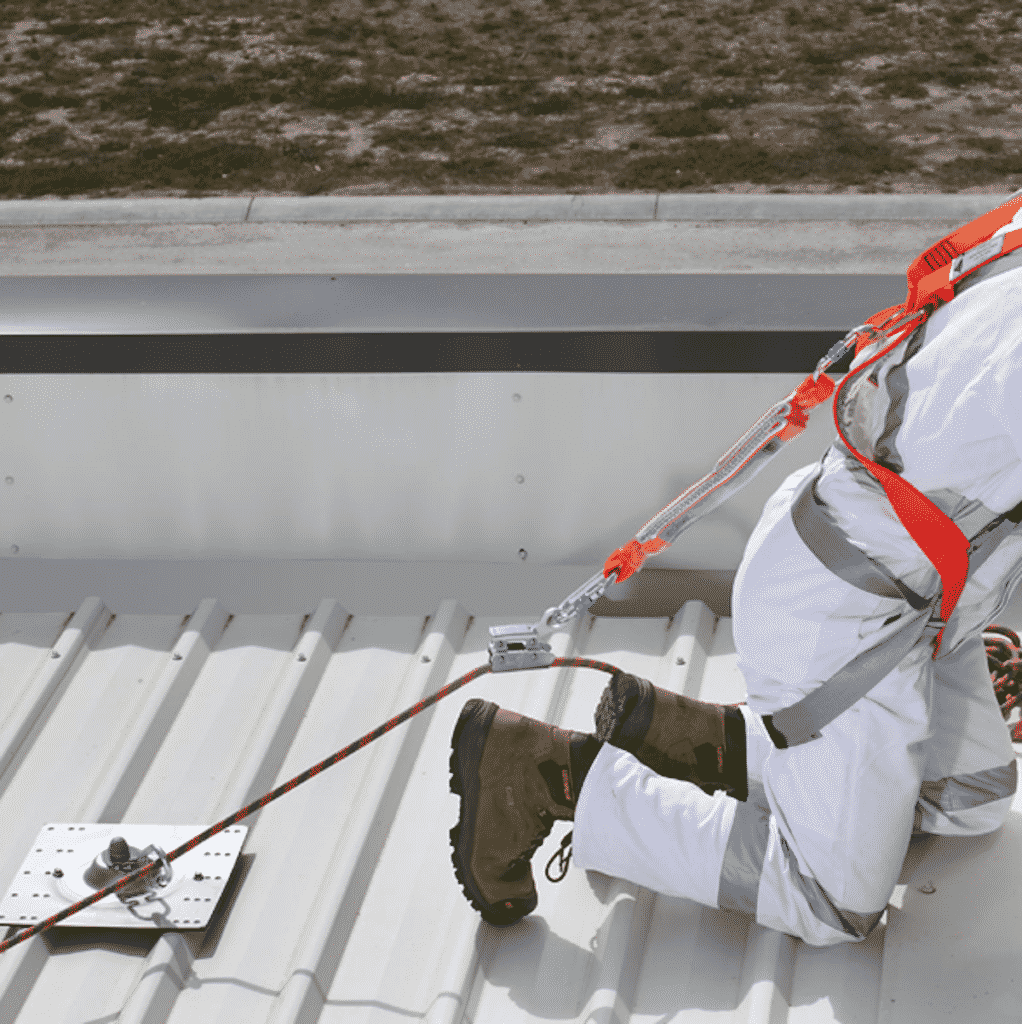Are you aware, 20% of accidents recorded in the construction industry are fall-related? These stats are proof that working at height is extremely risky and employers need to prioritise their workers’ safety. Providing workers with the correct safety gear, putting the necessary safety procedures in place and using correct fall protection equipment is paramount. And roof anchor points are such examples of essential height safety equipment.
Bear in mind that the mentioned safety precautions aren’t only mandatory when workers are working on tall towers or skyscrapers. In fact, fall-related injuries can occur at less than three meters above the ground!
With that in mind, let us enlighten you on what roof anchor points are, why you need them, the different types available and how you go about choosing the right one. We’ll also include a few safety tips when using roof anchors.
What Are Roof Anchor Points?
As previously highlighted, roof anchor points form a type of fall protection system. They serve to protect workers who are working on elevated surfaces from slips or minimise injuries in the event of falls.
They can either be temporary or permanent roof anchor points, depending on the duration of the project.
Regardless of the type you pick, correct and professional roof anchor point installation is crucial, otherwise it defeats the whole purpose of buying the equipment. We urge you to engage the services of a reputable company to install your roof anchor points properly and protect your workers effectively.
Why Do You Need Roof Anchor Points?
We’ve established that roof anchor points are necessary to create a safe working environment for your workers. But also note that having roof anchor points isn’t optional for Australian construction companies. It’s the law.
Failure to have roof anchor points on your construction site is a criminal offence. You’re liable to fines and lawsuits if you fail to comply with safety standards in Australia involving working at height.
Types of Roof Anchor Points
There are different types of roof anchor points to pick from depending on your project. Examples include:
- Anchor straps: Anchor straps are easy to use. To effectively use this type, always be mindful of the strap’s rating. As a general rule of thumb, an anchor strap must support 5000lb per worker attached. This is especially true if they are being used as part of a fall arrest system.
- Tie-back lanyards: These work similarly to anchor straps. The only difference is that they aren’t separate pieces but are designed to tie around your anchor and back to themselves.
- Beam clamps & trolleys: These usually feature a sturdier steel construction and are perfect for static locations where you don’t have to move about.
- Door bars: This is a quick, easy and effective solution if you want an adjustable roof anchor point to manipulate. They are placed on the far side of a window or door from where your workers are working.
How to Pick the Right Roof Anchor Point
To pick the right roof anchor point, there are a few key considerations you need to keep in mind. These are as follows.
Type of Roof
What type of roof are you attaching the roof anchor to? Are you mounting the roof anchors on wood, steel or concrete roofs? Different roof anchor points are designed to attach to specific types of roofs. Pay attention to the specifications as highlighted by the manufacturer. This prevents unnecessary damage to a roof, often caused by using the wrong type.
Weight Capacity
How much weight can the anchor point withstand? Roof anchor points come with a recommended weight capacity as stipulated by the manufacturer. Adhere to this rating at all times.
Intended Task
What type of work are you planning to do? Is it a long- or short-term project? Pick temporary roof anchor points that are easy to remove for short-term projects. Opt for permanent roof anchor points like a horizontal lifeline system for long term projects.
Construction
Remember that your workers’ lives are at stake. That’s why you must pick robust roof anchors made of sturdy constructions—even if it’s for a short-term project. You can never go wrong with roof anchor points that are made of stainless steel.
Safety Tips
We’ll round off the article by including some safety tips to keep in mind each time you use roof anchor points:
- Always purchase your equipment from reputable companies that sell quality products. Use online customer reviews to ascertain a company’s reputation, service and product quality.
- All roof anchor points must be certified by qualified and experienced engineers before use.
- Inspect roof anchor points and other fall protection systems before use. This also means inspecting if there are loose screws or bolts.
- Always adhere to the equipment’s recommended load-bearing capacity.
Conclusion
You have all the facts, now it’s time to make a decision. Are you going to be a responsible employer and do everything you can to safeguard your workers’ lives? You decide.
